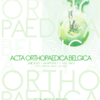Instability after reverse total shoulder arthroplasty: risk factors and how to avoid them
Instability; reverse shoulder arthroplasty; proximal humeral fracture; orthopaedic trauma; dislocation.
Published online: Aug 23 2022
Abstract
Instability after RTSA (4’7%) remains a complication with limited salvage options... or not? We conducted a study of the incidence, predisposing factors, and treatment of RTSA instability to risk stratify patient and identify the most reliable treatment methods.
We retrospectively searched for RTSAs performed between 2008 and 2017 at our institution by one surgeon using the same technique. We identified post- operative dislocations or symptoms of instability. 103 patients underwent 103 RTSAs (97 primary, 6 revision). 6 patients had 5 dislocations (3 in primary RTSAs, 3 in revision RTSAs). Mean time from surgery to diagnosis was 32.6 days (range, 10-60 days). One dislocation occurred immediately after surgery, 0 after falls, 3 from low-energy mechanisms of injury, and 2 without known inciting events.
All dislocations were treated in the operating room; no dislocation was successfully treated with simple closed reduction in the clinic. Although dislocation after RTSA is uncommon, the risk is higher for patients with higher BMI and for patients undergoing revision surgery.
The highest risk of instability occurs in RTSAs done for severe proximal humerus fracture; where the anatomy of the shoulder is changed. In these cases, approximately one in four patients will have a recurrent dislocation. In patients with persistent instability or with risk factors for instability, consideration should be given for use of larger glenospheres and increasing the lateral offset at the time of RTSA. Besides, peri- glenoid release, the suitable tension of the soft tissues tend to be the key of the stability.
Level of Evidence: Level IV; Case Series; Treatment Study.
